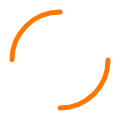My patient
Here you will find all the important information you need for the care of your patient with an implanted catheter.
My patient
Here you will find all the important information you need for the care of your patient with an implanted catheter.
Content
You have open questions?
Feel free to contact us. You can reach us Monday – Friday from 08:00 – 17:00 at:
Tel: +49 7471 73972-0
Mail: info@ewimed.com
1. Training

For us, the patient is the center of attention. Our goal is to provide the patient with the best possible care together with you. The ewimed supply concept guarantees fast, personal, and complete instruction in the safe use of the drainage systems.
After the patient is discharged from the hospital, one of our training staff will promptly contact the patient by phone using the contact information provided by the hospital on the discharge order. The training representative will schedule a training session. Here, the patient and caregivers are given detailed instructions on how to use the drainage sets and change dressings. There is no gap in care for the patient. For the training, our training staff will bring a patient folder with all the necessary information and documents as well as the first drainage material.
The patient folder contains, among other things, drainage instructions in which the individual steps of drainage and dressing change are again recorded in writing for reference.
You can also download the instructions and other important information from our download area.
All further questions will be answered by our training staff personally during the training. Afterwards we continue to be at your disposal.
2. Drainage instructions
In the Patient Information document you will find detailed drainage instructions and information on our drainage sets. The drainage instructions are also available as a video.
3. Dressing change
In patients with catheters for drainage of pleural effusions and ascites, dressing change is an integral part of the drainage procedure and must be performed after each drainage of the effusion. If no drainage is performed for some time, it may still be advisable to renew the dressing. If additional dressing material is needed, visit our online store.
Note: We recommend showering prior to the drainage / dressing change so that the dressing can be changed promptly should it become wet.
Would you like to repeat the instructions for changing the dressing again at your leisure? No problem! Click here for instructions for dressing changes.
In our download area you will also find the document for printing as well as a training video.
4. Billing of services
To give you a non-binding overview of the billable services in connection with the care of patients with catheters, we have compiled the respective service descriptions for you here.
The billing of services in the field of nursing is regulated in the 5th Social Security Code (SGB V) in the Nursing Guideline. As a care provider, you will need a prescription from the patient’s primary care physician for home health care.
Excerpt from the 5th Social Security Code (SGB V)
No.
13
Service description
Drainage, Check, Supply
Check position, secretion flow as well as tabs. Changing the secretion canister
Comment
–
Duration and frequency of the measure
1 – 2 x daily
We recommend that you also have the following service prescribed:
No.
31
Service description
Associations
- Application and change of wound dressings
Application, change of dressings, wound healing control, disinfection and cleaning (also wound cleansing bath). Irrigation of wound fistulas. Care of wounds under aseptic conditions
Comment
Localization and wound findings must be indicated in the diagnosis.
The “Checking of drains” is part of the service and cannot be prescribed separately.
Duration and frequency of the measure
In each case 1 x daily
Source and references
- Guideline of the Federal Joint Committee on the prescription of home health care (Home Health Care Guideline) in the revised version of September 17, 2009, published in the German Federal Gazette (Bundesanzeiger) February 9, 2010, entered into force on February 10, 2010 last amended March 16, 2017 published in the Federal Gazette Banz AT November 24, 2017 B1 entered into force November 25, 2017.
- Annex to the Home Nursing Guideline pursuant to Section 92 (1) Sentence 2 No. 6 and (7) SGB V
Please do not hesitate to contact us if you have any questions.
5. Flushing of the catheter
Depending on the viscosity of the effusion or the length of time the catheter has been in use, the catheter tube may become clogged and require flushing. Irrigation is performed under aseptic conditions in the hospital. Please do not flush the tube yourself. Refer the patient to the hospital where the catheter was implanted.
For contact details, please refer to the catheter passport or contact the attending general practitioner.
We will be happy to answer any questions you may have in this regard.


